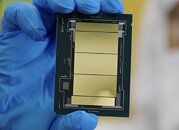- Joined
- Aug 19, 2017
- Messages
- 2,569 (0.97/day)
Intel has begun rolling out software binaries compiled with support for upcoming Advanced Performance Extensions (APX) and Advanced Vector Extensions 10 (AVX10) instruction set extensions in their Clear Linux distribution, ahead of any processors officially supporting these capabilities launching. Clear Linux is focusing first on optimized APX and AVX10 versions of foundational software libraries like glibc and Python. This builds on Clear Linux's existing support for optimized x86-64-v2, v3, and v4 code paths, leveraging the latest microarchitectural features of each Intel CPU generation. The rationale is to prepare Clear Linux to fully leverage the performance potential of next-generation Intel Xeon server processors, code-named Granite Rapids, expected to launch later this year.
Granite Rapids will introduce AVX10.1/512 instructions as well as the new APX capabilities, which are currently not well documented implementation wise. By rolling out APX/AVX10 support in software now, Clear Linux aims to have an optimized ecosystem ready when the new processors officially ship. Initially, APX and AVX10 support is being added using the existing GCC compiler. Still, Clear Linux notes they will transition to using the upcoming GCC 14 release with more mature support for these instruction sets. The goal is to eventually have many Clear Linux packages compiled with APX/AVX10 code paths to maximize performance on future Intel CPUs. This continues Clear Linux's strategy of leveraging Intel's latest hardware capabilities in software.

View at TechPowerUp Main Site | Source
Granite Rapids will introduce AVX10.1/512 instructions as well as the new APX capabilities, which are currently not well documented implementation wise. By rolling out APX/AVX10 support in software now, Clear Linux aims to have an optimized ecosystem ready when the new processors officially ship. Initially, APX and AVX10 support is being added using the existing GCC compiler. Still, Clear Linux notes they will transition to using the upcoming GCC 14 release with more mature support for these instruction sets. The goal is to eventually have many Clear Linux packages compiled with APX/AVX10 code paths to maximize performance on future Intel CPUs. This continues Clear Linux's strategy of leveraging Intel's latest hardware capabilities in software.

View at TechPowerUp Main Site | Source

